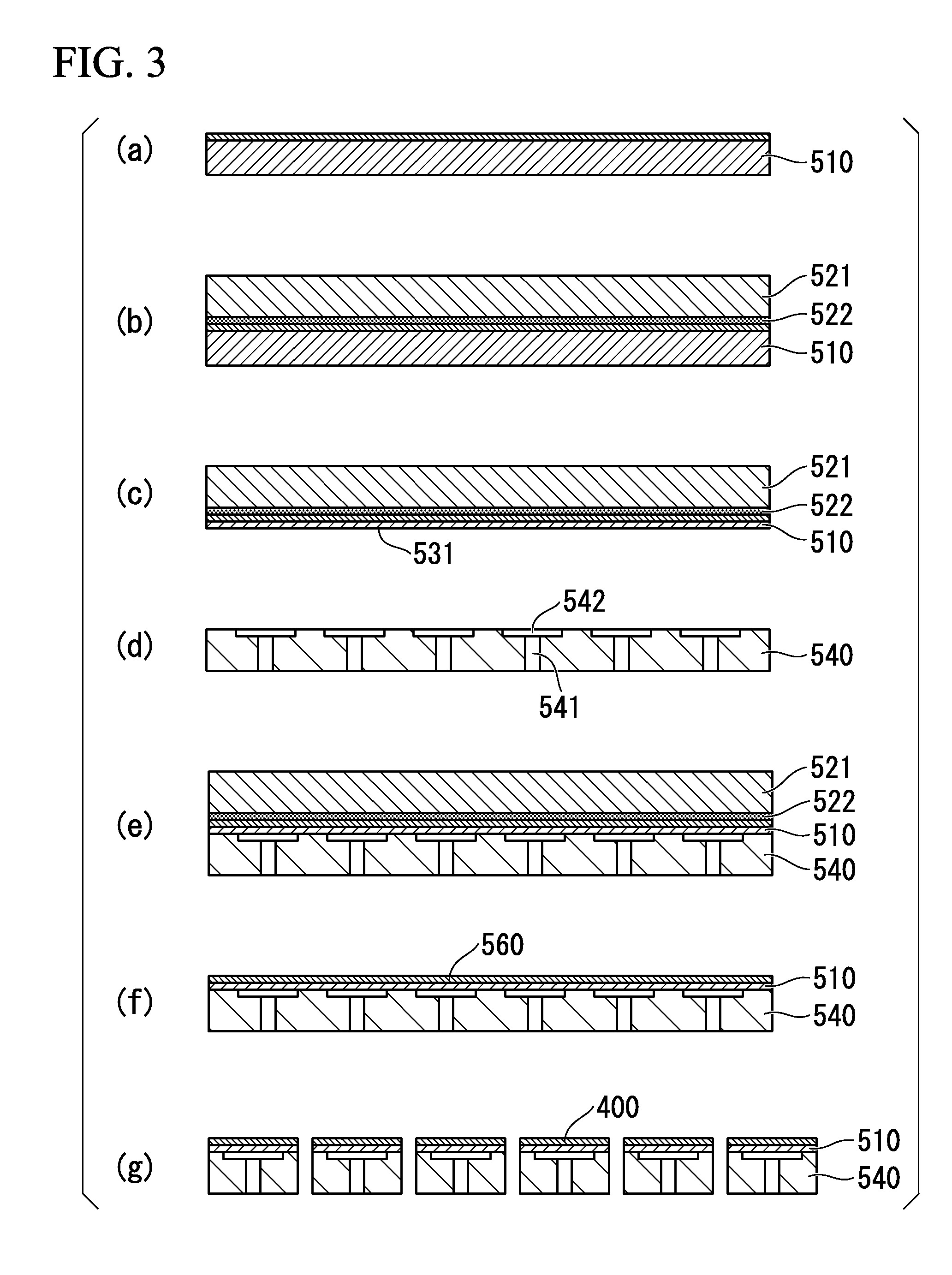Resonant pressure sensor and method of manufacturing the same
a technology of resonant pressure sensor and manufacturing method, which is applied in the direction of fluid pressure measurement, fluid pressure measurement by electric/magnetic elements, instruments, etc., can solve the problems of difficult control of thickness of several m to several tens of m, poor sensitivity, and degraded device characteristics of sensors, etc., to achieve excellent characteristics and degrade the effect of device characteristics
- Summary
- Abstract
- Description
- Claims
- Application Information
AI Technical Summary
Benefits of technology
Problems solved by technology
Method used
Image
Examples
first preferred embodiment
[0102]FIG. 1 is an explanatory diagram illustrating a configuration of a resonant pressure sensor in accordance with a first preferred embodiment of the present invention. FIG. 2 is an explanatory diagram illustrating shapes of the diaphragm illustrated in FIG. 1.
[0103]The resonant pressure sensor includes a sensor substrate 410 and a base substrate 430. The sensor substrate 410 and the base substrate 430 are made of silicon. Resonant-type strain gauge elements 411 are disposed on one surface of the sensor substrate 410, and the other surface of the sensor substrate 410 remains polished at the thickness corresponding to a diaphragm 412. The other surface of the sensor substrate 410 bonds directly with one surface of the base substrate 430.
[0104]A concave portion 435 is formed in a portion of the base substrate 430 that bonds with the sensor substrate 410. The concave portion 435 substantially forms the diaphragm 412 in the sensor substrate 410. The concave portion 435 has a predeter...
second preferred embodiment
[0132]FIG. 5 is an explanatory diagram illustrating a configuration of a resonant pressure sensor in accordance with a second preferred embodiment of the present invention. FIG. 6 is an explanatory diagram illustrating shapes of the diaphragm illustrated in FIG. 5.
[0133]The resonant pressure sensor includes a sensor substrate 610 and a base substrate 630. The sensor substrate 610 and the base substrate 630 are made of silicon. Resonant-type strain gauge elements 611 are disposed on one surface of the sensor substrate 610, and the other surface of the sensor substrate 610 is polished at the thickness corresponding to a diaphragm 612 to form a concave portion 635. The other surface of the sensor substrate 610 bonds directly with one surface of the base substrate 630.
[0134]The concave portion 635 is formed in a portion of the sensor substrate 610 that bonds with the base substrate 630. The concave portion 635 substantially forms the diaphragm 612 in the sensor substrate 610. The concav...
third preferred embodiment
[0170]FIG. 9 is an explanatory diagram illustrating a configuration of a resonant pressure sensor in accordance with a third preferred embodiment of the present invention. FIG. 10 is an explanatory diagram illustrating a shapes of the diaphragm illustrated in FIG. 9.
[0171]The resonant pressure sensor 800 includes a sensor substrate 810 and a base substrate 830. A conducting hole 845 is formed in the base substrate 830 by plasma etching, alkaline etching, or the like. The conducting hole 845 can have any shape appropriate for a conducting hole. A resonant-type strain gauge element 811 is fabricated on an upper surface 815 of the diaphragm.
[0172]The thickness of the diaphragm is decided depending on the thickness of the sensor substrate 810. For this reason, the thickness 820 of the diaphragm is adjusted such that grinding / polishing is performed up to a desired thickness. Since the grinding / polishing amount can be finely adjusted for each wafer, the thickness of each wafer can be cont...
PUM
| Property | Measurement | Unit |
|---|---|---|
| thickness | aaaaa | aaaaa |
| displacement | aaaaa | aaaaa |
| size | aaaaa | aaaaa |
Abstract
Description
Claims
Application Information
 Login to View More
Login to View More - R&D
- Intellectual Property
- Life Sciences
- Materials
- Tech Scout
- Unparalleled Data Quality
- Higher Quality Content
- 60% Fewer Hallucinations
Browse by: Latest US Patents, China's latest patents, Technical Efficacy Thesaurus, Application Domain, Technology Topic, Popular Technical Reports.
© 2025 PatSnap. All rights reserved.Legal|Privacy policy|Modern Slavery Act Transparency Statement|Sitemap|About US| Contact US: help@patsnap.com



